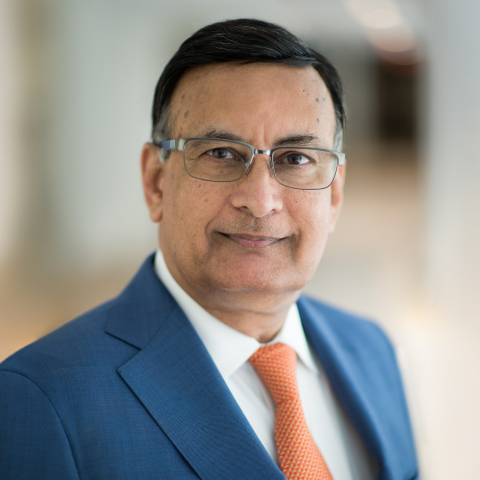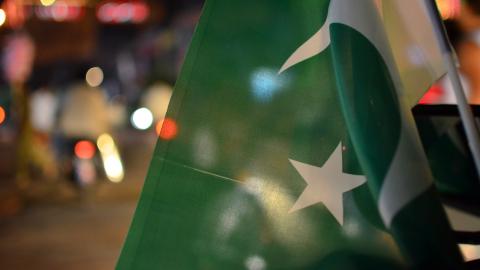For the last three decades, Pakistanis have been preoccupied with jihad in their neighbourhood and an unending internal power struggle at home.
As a result, Pakistan’s national discourse has failed to fully comprehend the changes that have come about in the world since the end of the cold war that came with the collapse of the Soviet Union in December 1991. Nations of the world still face the spectre of conflict, but collaboration is flourishing between countries that once saw each other as enemies. Pakistan’s leaders, however, have repeatedly missed the opportunity to ride (or even prepare for) the new global wave.
Having been an American ally from the 1950s through the 1980s, Pakistan should have benefited from the unipolar moment when the United States dominated the world order. Instead, the unwise choice was made to add anti-Americanism to the negativity about India that had been part of the national DNA since independence. Meanwhile, China, which Pakistanis admired as being an ‘all-weather friend’, embraced a strategy of economic expansion based on ignoring all outstanding conflicts.
China secured investment from the West and became its major trading partner. Although they had spent much of the first four decades since 1949 in decrying the US as ‘hegemonistic and imperialist,’ the Chinese held back their rhetoric for a quarter century following 1990. US-China trade soared to $690 billion at its peak in 2022.
China had fought a border war with India in 1962 and the two countries never trusted each other after that. Notwithstanding their disagreement over their shared border, mutual mistrust did not stop them from trading. Bilateral trade between India and China reached $136 billion last year. From the US to India to China, the common policy thread was to pursue economic growth and to keep political and security issues separate from economic ones.
In a speech to the Pakistan National Assembly in December 1996, President Jiang Zemin, proposed “seeking common ground on major issues” between nations “while reserving differences on minor ones.” Offering advice that Pakistan’s leaders ignored, he said, “If certain issues cannot be resolved for the time being, they may be shelved temporarily so that they will not affect the normal state-to-state relations.”
China, now led by Xi Jinping, is being more assertive in trying to shape the global order according to its wishes. But Chinese leaders acknowledge they would not be in a position to be assertive today if they had not built their economy, with Western cooperation, over the last many years. In any case, shared economic interests between China and the West have acted as a restraint on hardliners on both sides, which has not been a bad thing for global peace.
There are other examples of pragmatism to learn from. Since its independence in 1971, the United Arab Emirates (UAE) has remained a strong supporter of the rights of Palestinians and a critic of some of Israel’s policies. But in 2020, the UAE led the way in the ‘Abraham Peace Accords’ aimed at normalizing relations between Arabs and the Jewish state, hopefully paving the way for the solution of the Palestinian issue as well. Now, the two countries are benefiting from each other’s strengths. Israel has access to the UAE’s capital while the doors have opened for the UAE to Israel’s advanced technology.
The UAE is what international relations experts describe as a ‘middle power’, defined in Encyclopedia Brittanica as “a state that holds a position in the international power spectrum that is in the ‘middle’ – below that of a superpower, which wields vastly superior influence over all other states, or of a great power, but with sufficient ability to shape international events.” Pakistan, too, is a middle power.
Israeli scholar Gedaliah Afterman and UAE-based scholar Narayanappa Janardhan explained in a recent essay that economic and functional collaboration offers a better way to function for middle powers in a fragmented world. The countries that are currently doing well are the ones that are “more focused on promoting five economy-oriented Cs – capital, connectivity, commerce, collaboration, and climate – rather than just harping on politics and security issues.”
Citing poetry, instead of statistics, and spouting myths and conspiracy theories, instead of facts, Pakistan’s thought leaders and policymakers have kept the nation mired in delusions of grandeur. Soon after its nuclear tests in 1998, Pakistan built fiberglass monuments of nuclear capable missiles as well as the mountain where the tests were conducted. Until recently, it was not unusual to find memes on social media about Pakistan being the next superpower. Jihad for the ‘liberation’ of Afghanistan from the U.S. and Kashmir from India have been popular causes.
But while Pakistanis have been focused on fighting each other about power and ideology, the world is moving on. The difference between a crisis-state (as Pakistan is referred to) and the countries that are advancing is an educated workforce, focused on producing wealth for their families and the country, and a leadership that understands global changes and adapts to them. So far, Pakistan seems to have neither.
In 1971, the literacy rate of erstwhile East Pakistan was only 18 per cent. Today Bangladesh’s literacy rate hovers around 80 per cent, and its GDP is expected to reach $485 billion by the end of this year. (West) Pakistan had a literacy rate of 22 per cent in 1971, which has gone up only to 59 per cent in the last 52 years. Pakistan, with a population of 240 million people, has a GDP of $341 billion. Compare that to the $564 billion GDP of Israel, with a population of just under 10 million, and UAE, which has a GDP of $698 billion, with 9.5 million people. While the UAE is an oil exporter, Israel is not.















